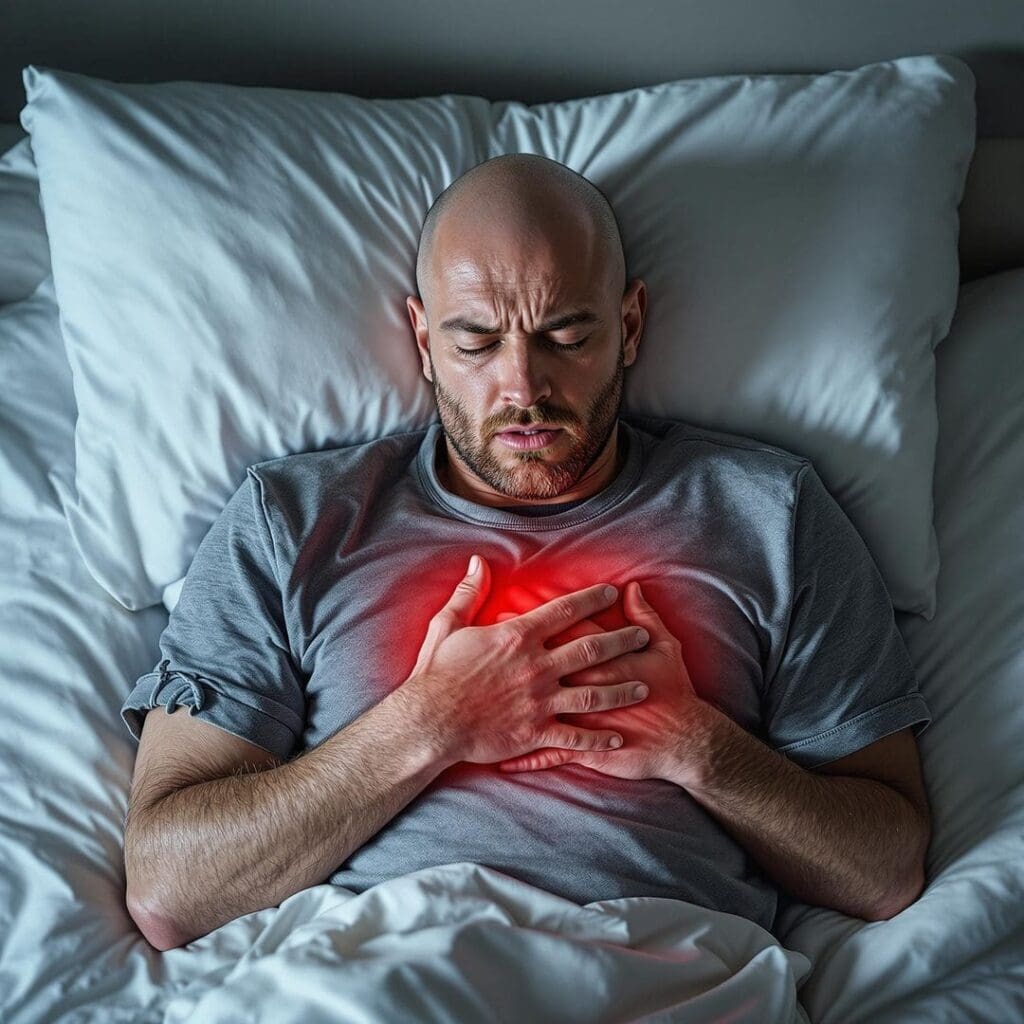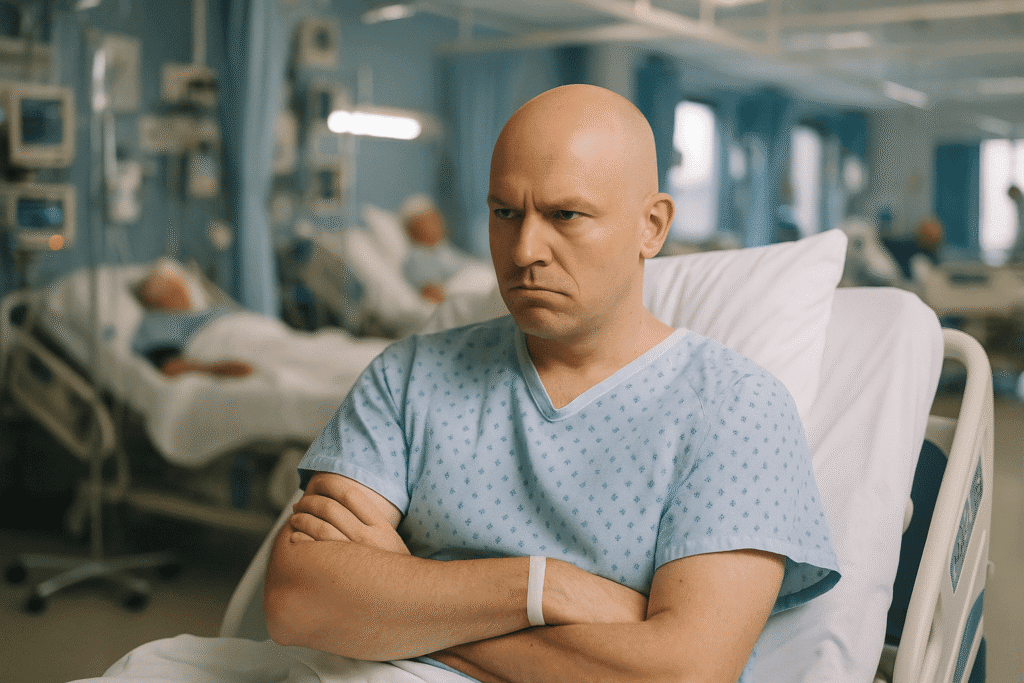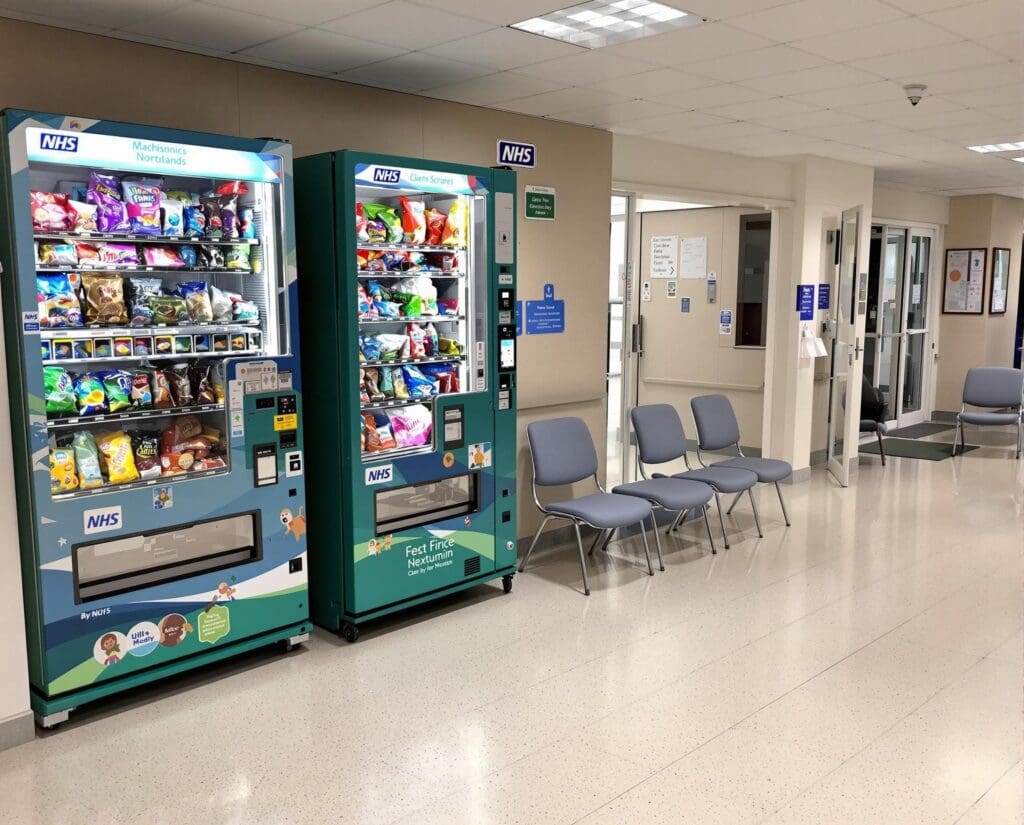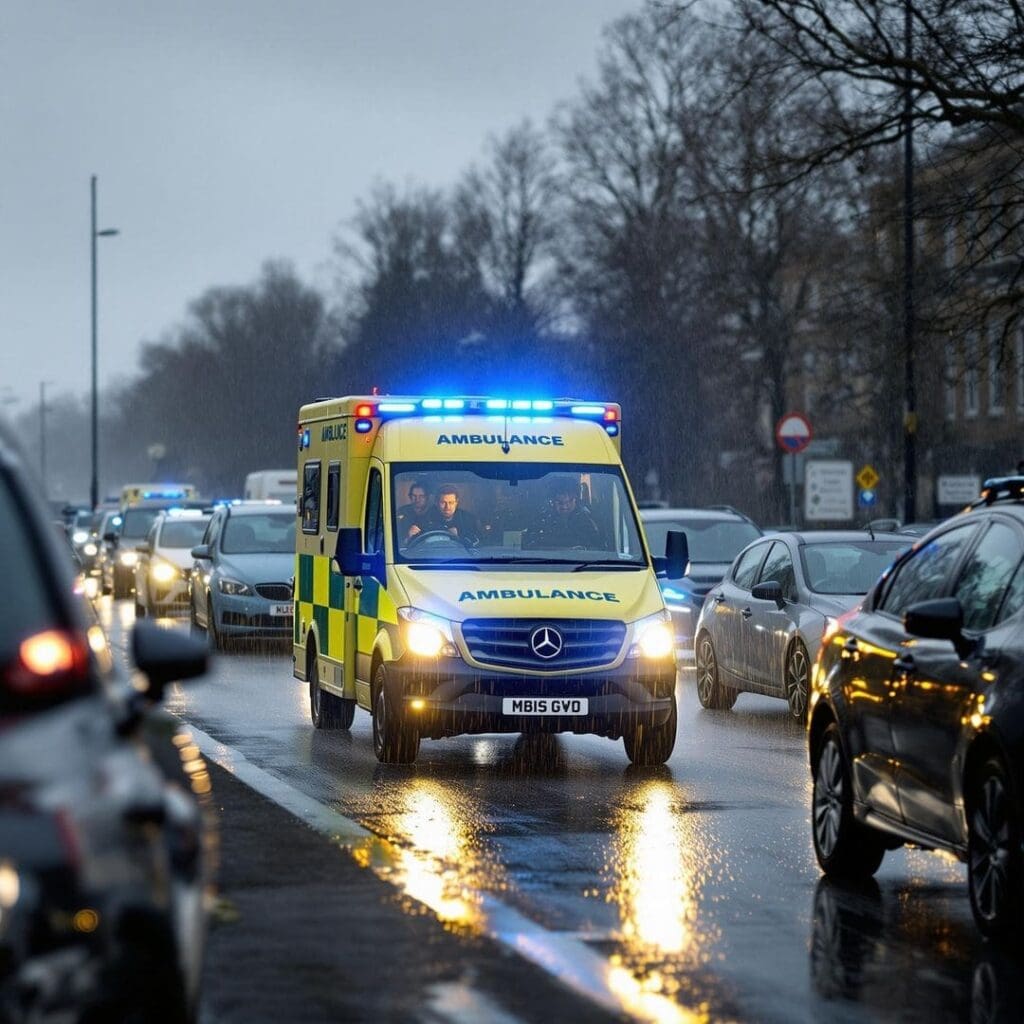I had a heart attack at 50. Here is what went down.

The ambulance arrived very quickly, within minutes. The paramedics were great. They did a quick heart trace, and took me straight to the local hospital, where my nightmare began. Honestly, I could rant and rant on this page, but I have distilled, just the main points, to tell the story calmly.
First came the alarms. I was laid in recovery, full of morphine, hoping to drift off and rest — but every time I closed my eyes, a loud, persistent alarm jolted me awake. My heart rate had dropped below 50. No one was rushing in. No one seemed concerned. I asked if it could be turned off. They told me not to go to sleep.
The irony wasn’t lost on me.
I’d just come through the worst night of my life — whiskey, weed, and YouTube till 4am, spiralling into my own chaos. I had pushed myself right into a heart attack.
And now here I was, full of morphine, finally still — and being told to stay awake.
What kind of torture was this?
I was still wearing the same shirt and jeans I’d thrown up in. I could smell myself. I felt disgusting. When I finally complained, they let me shower — then made me change into a pair of pyjamas that looked like they’d been stitched together from old 70s caravan curtains. Then they wheeled me to the ward… where things got worse.
Noise, Neglect, and Nowhere to Rest
Now, it wasn’t just one alarm — it was ten. Ten beds, ten machines, ten ignored alarms. A symphony of stress. I tried to lie still. I tried to breathe through it. But I could feel my anger returning. That wired, anxious, fight-or-flight energy that never truly left since the pandemic. I couldn’t sit still.
It wasn’t the nurses I was angry with for ignoring the alarms. I understood quickly — they weren’t careless, they were conditioned.

The fault, in my opinion, lay with the engineer who programmed that insufferable beep
How Alarm Fatigue Trained Everyone to Ignore Emergencies
Nearly every alarm was unnecessary: a feed or medication drip had simply emptied, needing to be unhooked. Nothing life-threatening, yet the sound was designed to command urgency — fast, persistent, and psychologically jarring.
For someone like me, who flinches at supermarket checkout beeps, this was a form of torture. And unlike a cashier’s station, there was no reprieve. The beep became part of the air in that ward. It robbed sleep, amplified stress, and frayed every last nerve.
It wasn’t an NHS nurse’s indifference that made me suffer — it was a poorly designed system that failed both staff and patients alike.
The ward was on the top floor, so I started pacing — up and down eight flights of stairs just to go outside for a vape I didn’t even want.
The lift? Not it wasn’t broken, I just hate closed spaces.
I just needed to feel human again. Needed to feel like I could make a choice. Eventually, I told the nurse, “I have to go.”
She just said: “Okay.” So I left.
I Left. But I’d Be Back.
It was a conversation with my GP that brought me back. She didn’t push. She just said: “I’ll call them. There’ll be a bed. Please go now, Daniel.”
I trusted her. But there wasn’t a bed waiting.
She had tried to call, but no one answered — our local hospital often takes over 20 minutes to pick up. So I was admitted anyway, and placed in a makeshift bed in EMU — the Emergency Medical Unit.
That’s where things broke me.
The Overlooked Stressor: Alarm Overload in NHS Wards
The man beside me died.
I watched him pass.
The nurse — compassionate and calm — was comforting his family and managing the situation. And during all this, a ward wide alarm blared — and the lights flashed up and down the corridor — completely ignored. Not out of neglect, but necessity. She was already doing everything she could.
That’s how short-staffed they were?
EMU was loud. Hot. Suffocating.
I couldn’t sleep. I couldn’t think.

Eventually, I wandered down to the foyer and curled up in a chair outside Boots. It was cooler, quieter — the only place I could breathe.
The next day, it was back to the same top floor ward I was on before.
I found myself sitting across from one of the largest men I’d ever seen, being loud, rude, and strangely celebrated for it. He’d boast about trying to drink “just four litres of fizzy pop today” and seemed to expect applause. Three times, that day, he sent a nurse out to Marks & Spencer to fetch “those sweets I like,” and each time, she went. No protest. Just service. He’d been there 66 days already.
Health care my arse!
In the UK, we have “social health care.” But let’s be clear: it’s not free — we all pay for it.
A big chunk of it comes from VAT, so every time you buy something — from a loaf of bread to a pint of beer — you’re helping fund the NHS.
And yet, many still imagine it’s a gift from the government, like some perk for being British — as if life were a game of Sid Meier’s Civilization, and we unlocked the “Universal Health care” tech.

What really gets me, though, is how much of that money is wasted — not by the nursing staff, but by a system flooded with illness caused by poor diet and lifestyle. Big Pharma and Bill Gates’ B.S. That’s what upsets me. That’s what nearly killed me.
Outpatient Games
Before I left, I spoke to a doctor and asked if I could be treated as an outpatient. He said, “It’s possible.” So I said, “Let’s do that then.”
Four other doctors tried to convince me to stay. They told me it could be two months before I got an angiogram — and that it needed to be booked before I left. But they didn’t book it, despite my insistence that this would be done. I believed it was booked. Two months passed with nothing. It wasn’t until my GP chased it that I found out: **no one had scheduled anything at all**.
Turns out I didn’t need it. I had my second heart attack just two weeks later.
Blue Lights and Real Treatment

This time, there was no waiting. I was rushed by ambulance — blue lights — to a better hospital in a nearby city. The contrast was immediate. Professional, calm, focused. Less than an hour after arriving, I was in recovery with a stent in my artery. 2 days later, I was home and recovering.
It was like watching health care inverted — upside down and inside out. One seemed more like a human zoo. The other saved my life in under 60 minutes.
What I Learned
I’m not writing this to rage against the NHS. There are brilliant people working in a broken structure. But that structure — overburdened, desensitised, and systemically stuck — nearly cost me my life.
This experience is what made me serious about rebuilding outside the system. It’s why I started researching red light therapy, carnivore nutrition, stem cell support — and why I created this site. I never wanted to see another hospital bed again. And so far, I haven’t.
Sometimes healing requires stepping away from what’s “normal.” Especially when “normal” looks like decline on a schedule.
-
🦷 I Fixed My Gums With Tooth Powder (Not Industrial Waste)
I used to hate going to the dentist. The sound, the scraping, the needles—none of it appealed. But now? I actually don’t mind. My dentist is young, gentle, and somehow able to inject a needle into my gum without me feeling a thing. I don’t know how she does it—gum injections used to be excruciating. […]
-
Diet, Supplements, & My Healing Protocol
After having a heart attack at 50 I got very serious about my health, and extremely disillusioned with health care. I decided to walk my own path, rather than rely on prescription drugs and Doctors. Here’s a complete breakdown of the supplements and protocols I personally use as part of my ongoing recovery and optimization […]
-
Heart Attack at 50 – My Wake-Up Call
I didn’t expect it. Not at 50. Not like that. But on October 7th, 2023, my life stopped — literally. I had a heart attack. A serious one. What led to it wasn’t just diet or lifestyle (though they played a part). It was something deeper — years of tension, stress, grief, disconnection… all quietly […]
If you’d like to know me better, please consider subscribing to my Newsletter Dan Blackburn’s Strong Signal. or follow me on Facebook.